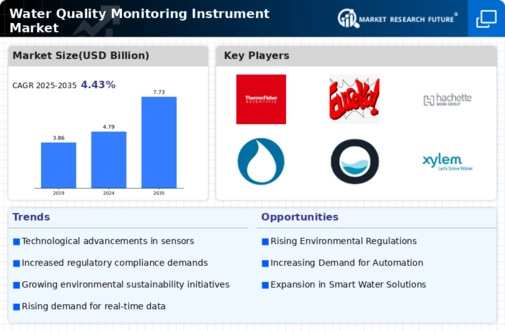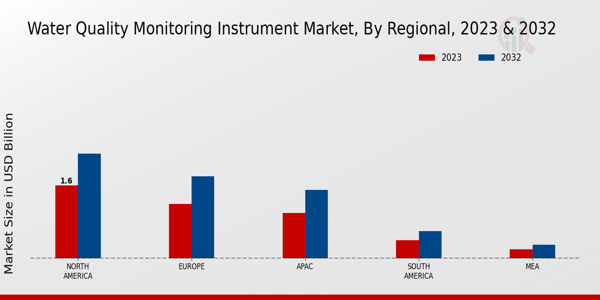The Water Quality Monitoring Instrument Market is characterized by a competitive landscape that includes a variety of players striving to establish their prowess in the industry. The demand for accurate and reliable water quality monitoring instruments has surged due to increasing concerns over water pollution and regulatory compliance across various sectors, including agriculture, environmental monitoring, and industrial processes. Companies in this market are continuously seeking innovative solutions to enhance their product offerings, improve the accuracy of measurements, and meet the diverse needs of their customers.
As the market expands, key players are leveraging advanced technologies and strategic partnerships to gain a competitive edge, which is leading to a dynamic environment in which companies must adapt quickly to changes in consumer demand and regulatory standards.
Thermo Fisher Scientific has carved a notable presence in the Water Quality Monitoring Instrument Market due to its comprehensive portfolio of advanced analytical instruments and solutions catering to water testing requirements. The company’s strengths lie in its commitment to research and development, which drives innovation and helps in the design of cutting-edge technology that meets stringent regulatory standards. Moreover, Thermo Fisher Scientific has cultivated strong relationships with key stakeholders, enabling it to broaden its market reach effectively. Its reputation for high-quality products ensures customer trust, while its robust distribution network facilitates a swift response to customer needs across different regions.
As water quality monitoring becomes increasingly crucial, Thermo Fisher Scientific remains a significant player with its strong emphasis on precision and reliability in monitoring equipment.
Eureka is also a distinguished competitor in the Water Quality Monitoring Instrument Market, bringing forth innovative products that cater specifically to the nuances of water quality testing. Known for its user-friendly instruments, Eureka promotes ease of use and efficiency in monitoring various water parameters, thereby appealing to a wide range of customers, from professionals to novices in environmental assessment.
The company's dedication to sustainability and environmental stewardship enhances its credibility and appeal in a market that values responsible practices. Eureka's investment in product reliability and the integration of advanced technology allows it to provide solutions that customers can depend on, thereby solidifying its position in the industry. With a focus on customer satisfaction and product performance, Eureka continues to play a pivotal role in shaping the future of water quality monitoring.























Leave a Comment